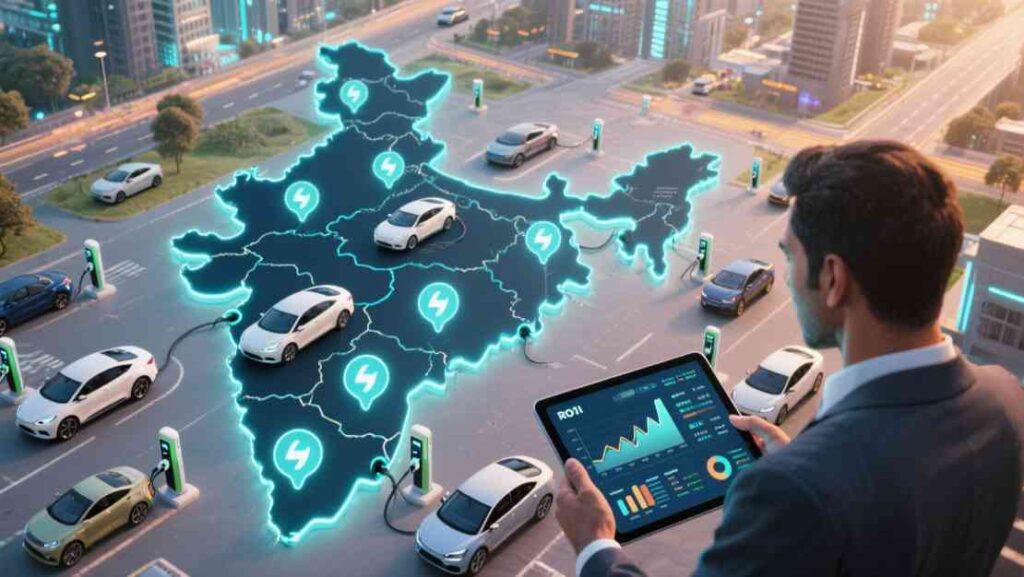Electric mobility is no longer a distant ambition; it is accelerating on Indian roads every day. At the heart of this transition sits the electric vehicle charging station—an asset that can unlock significant revenue while helping cities breathe cleaner air. Whether you want to franchise, develop, or operate a network, you first need a clear view of how the ecosystem is taking shape and where the biggest opportunities lie.
Below you will find a practical, research-backed guide that walks you through the current landscape, the rules that govern it, and the strategies that successful operators use to scale profitably.
The Current Charging Infrastructure Landscape
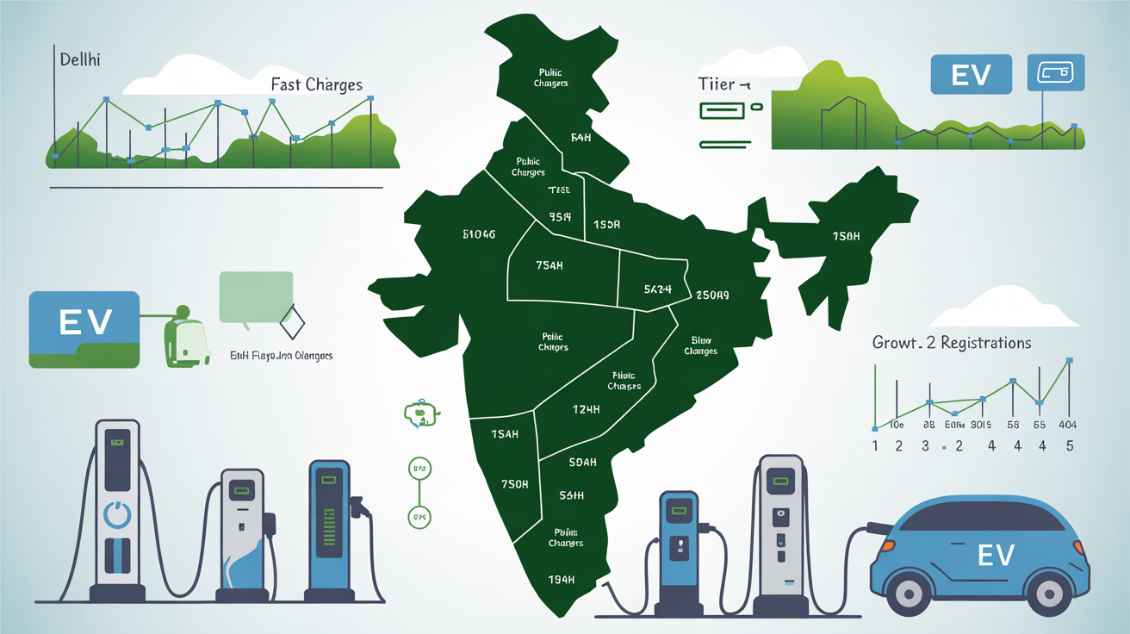
India’s charging network has grown at break-neck speed since the Ministry of Power released its revised Guidelines and Standards for EV charging infrastructure on 14 January 2022. You now have 1,640 operational public chargers nationwide, and a striking 940 of them cluster in just nine mega-cities—Surat, Pune, Ahmedabad, Bengaluru, Hyderabad, Delhi, Kolkata, Mumbai, and Chennai. Between October 2021 and January 2022 alone, 678 new public chargers went live, a 2.5-fold jump over previous numbers.
This expansion mirrors the surge in registrations—1.8 lakh new electric vehicles hit the road during the same period—confirming that supply and demand are reinforcing each other. Yet the network is still thin outside urban cores, so well-positioned entrepreneurs can secure first-mover advantage in tier-2 and highway locations.
Delhi offers an instructive case study. The capital’s EV Policy targets at least 30,000 charging points, covering everything from kerbside slow chargers to high-capacity DC hubs. Kerala, meanwhile, already operates 68 fast chargers and 1,169 pole-mounted slow chargers, and its State Electricity Board (KSEB) has earmarked sites for 2,392 more. Results show on the balance sheet: monthly charging revenue in Kerala tops ₹28.15 lakh, and annual collections have risen from ₹6.46 lakh in 2021-22 to an impressive ₹2.06 crore in 2023-24.
For you, these numbers illustrate three truths:
- The market momentum is undeniable.
- Public agencies happily partner with private operators to reach targets.
- A thoughtfully sited electric vehicle charging station can already earn meaningful cashflows.
Policy Support and Financial Incentives
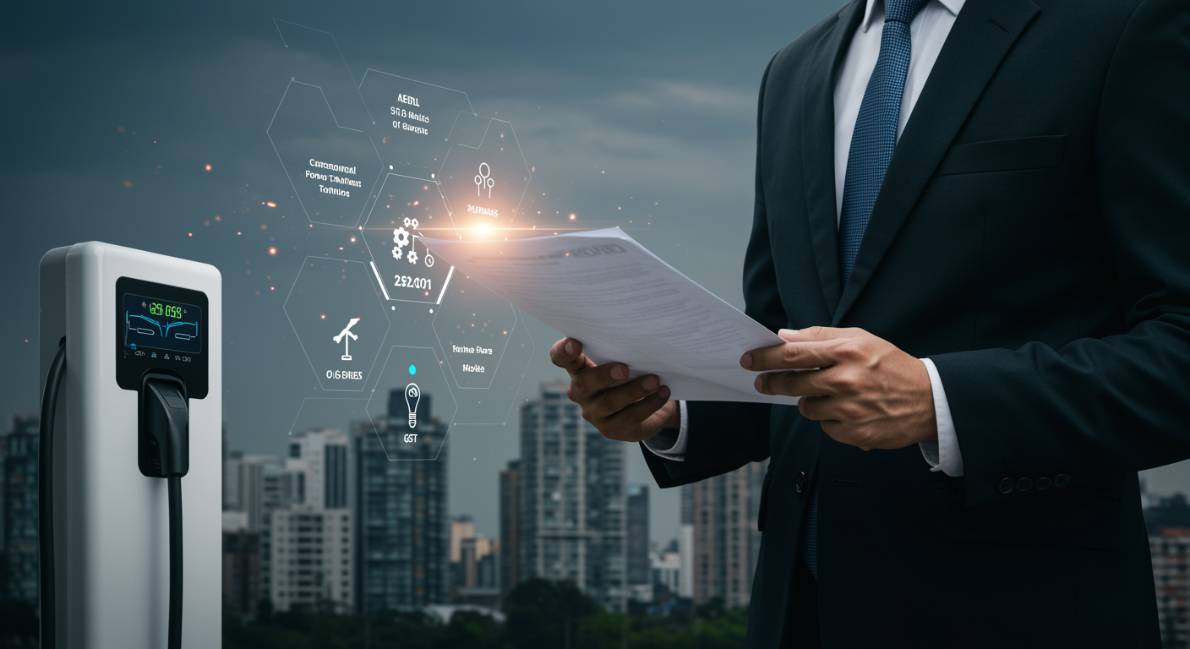
Profit potential is important, but policy is the true bedrock of a resilient charging venture. Central and state governments have engineered a package of incentives and protections that lower risk and raise returns.
- Affordable power tariffs: Several states fix concessional rates for public charging. Kerala, for instance, bills fast charging at ₹18/kWh and slow charging at ₹9/kWh. An 18 percent GST applies, but the end price still lands well below equivalent fuel costs, ensuring strong consumer uptake.
- Revenue-sharing land models: Instead of hefty upfront leases, many municipal bodies now offer vacant plots on a revenue-share basis. You pay a modest percentage of station income, turning land from a fixed cost into a variable expense that scales with utilisation.
- Single-window clearances: Delhi’s EV Policy introduced a single-window online portal where you can apply, track, and receive approvals for grid connections and civil works in one place. This cuts red tape and allows you to commission a charger in weeks rather than months.
- Grid-planning standards: The Ministry of Power recommends at least one public electric vehicle charging station every 3 × 3 km in city areas and every 25 km on highways. These targets signal to investors that demand creation will remain a policy priority, not an afterthought.
Take note: incentives are generous but not uniform. Always verify state-level guidelines before projecting revenues or agreeing to tariffs.
Proven Implementation and Expansion Tactics
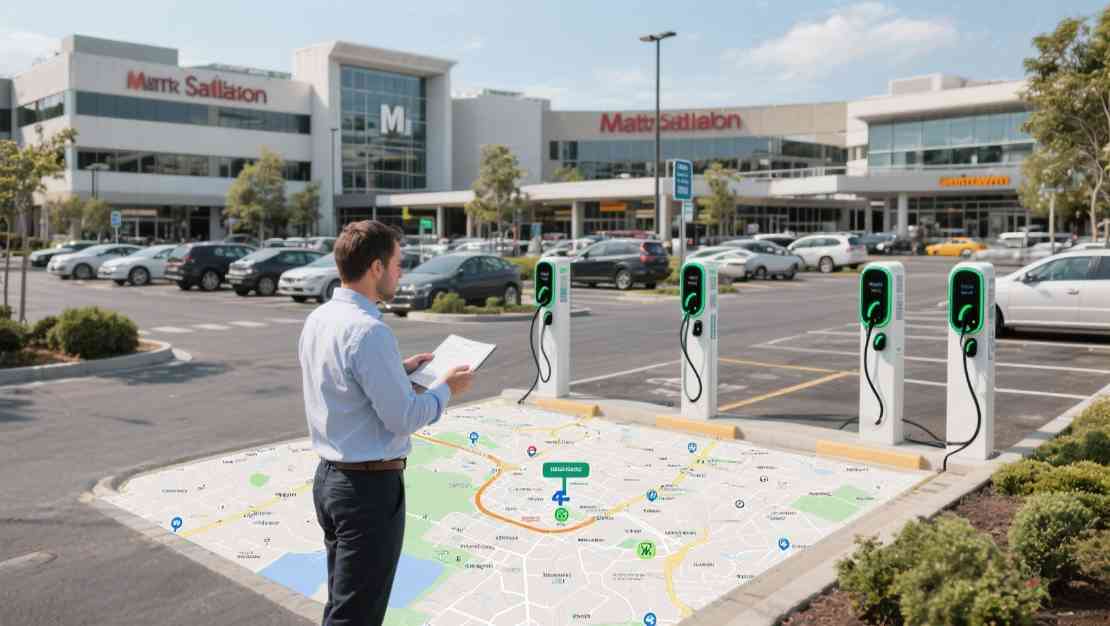
A technical spec sheet alone will not make your station profitable—you must place your asset where drivers naturally linger. Operators who scale fastest rely on three core tactics:
- Grid-based site selection
Using the 3 × 3 km policy grid as a map, shortlist locations with high vehicle density and limited existing coverage. Shopping malls, corporate campuses, and metro stations top the list because dwell times are long enough for meaningful charge sessions.
- Seamless permitting
Apply through Delhi’s single-window system or the relevant state portal; submit an electrical load estimate, safety plan, and evidence of land rights. Engage with the local distribution company early to avoid transformer-capacity surprises.
- Phased roll-outs
Don’t over-build during your first sprint. Install a mix of one or two DC fast chargers and a few AC points, monitor utilisation, then scale capacity when plug-in rates exceed 30–40 percent. Kerala’s model shows that starting lean still generates healthy income while protecting cash flow.
Addressing range anxiety is equally critical. Display real-time availability on popular charging apps and signpost your site on nearby arterials. A visible, reliable electric vehicle charging station not only earns money—it also sells more EVs, which in turn boost your utilisation.
Tech Upgrades That Win Users
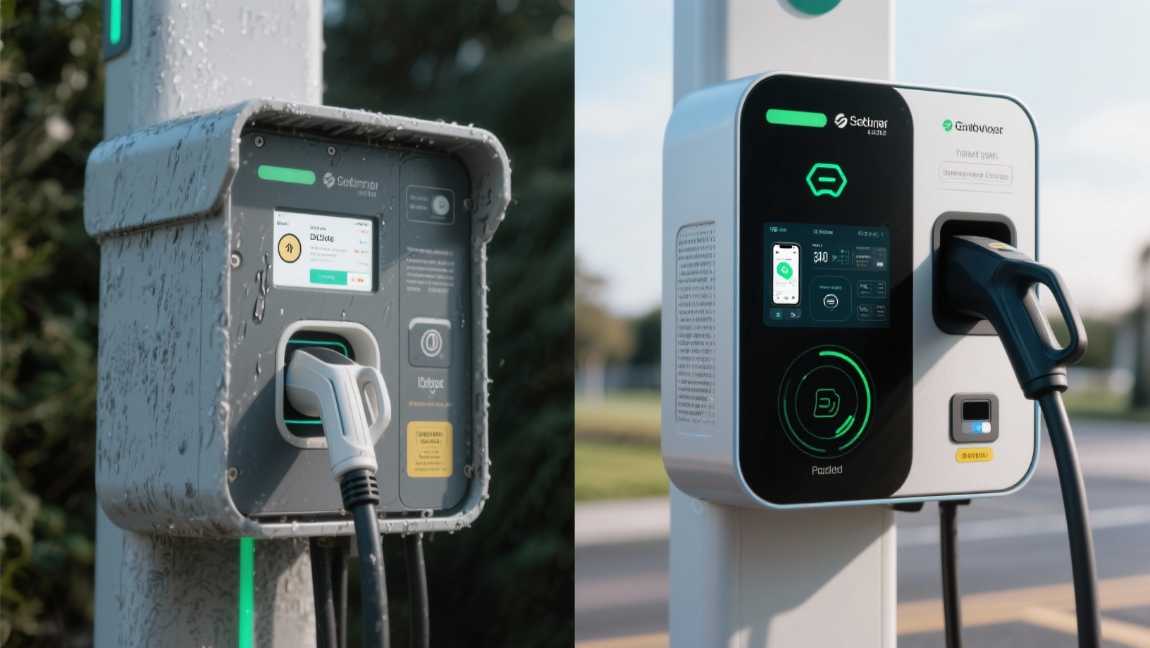
Early adopters tolerated slow 3.3 kW sockets; mainstream buyers will not. Fortunately, you can now deploy cutting-edge hardware without blowing the capex budget.
Fast and ultra-fast DC chargers: Units rated 50–150 kW can replenish 80 percent of a passenger-car battery in under 45 minutes. Logistics operators love them because a delivery van can top up during a lunch break.
Durable enclosures: Companies such as Thunderplus, Tata Power EZ Charge and others have switched to high-grade, weather-resistant materials—crucial when outdoor temperatures swing from scorching summers to monsoon downpours.
Smart software: Modern stations integrate with mobile apps that show live charger status, enable advance reservations, and activate contactless payment. For you, software also delivers remote diagnostics, cutting maintenance callouts and safeguarding uptime.
Together, these innovations remove two historic pain points: driver uncertainty and operator downtime. Deploy them from day one and you will stand out in a crowded market.
Counting the Cash: Revenue and Cost Drivers
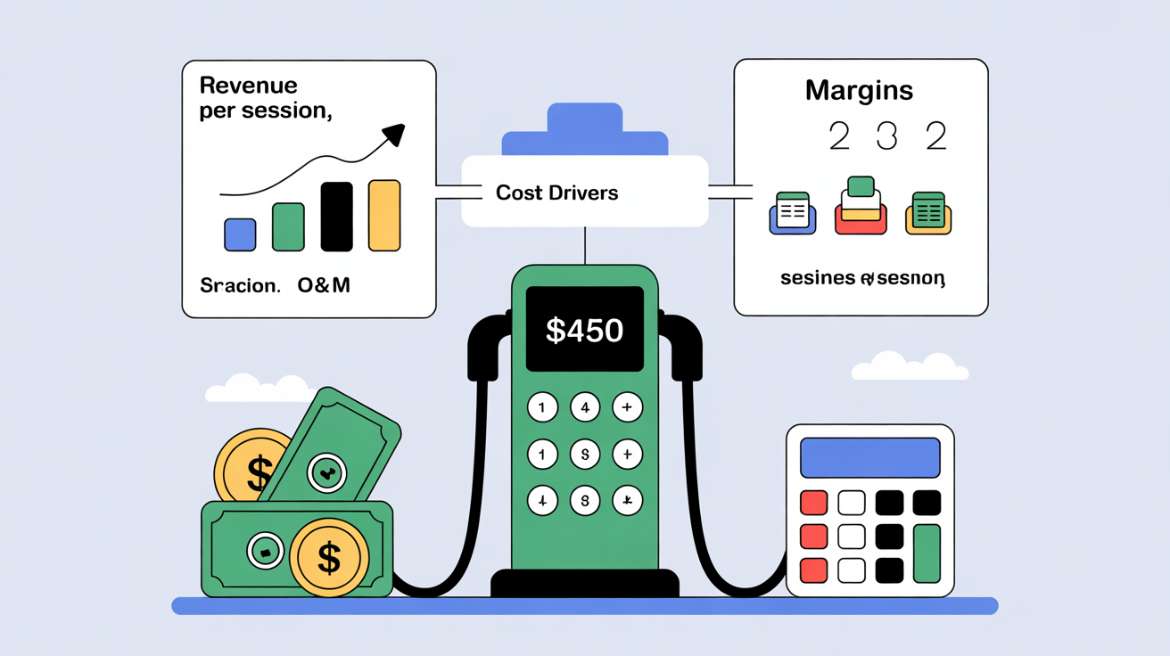
Let’s quantify what an electric vehicle charging station can earn. We use KSEB data because it spans both slow and fast charging formats.
– Average fast-charging price: ₹18/kWh
– Average session energy draw: 25 kWh (typical for a mid-size sedan)
– Revenue per fast-charge session: ₹450
– Session length: roughly 45 minutes
If a single 60 kW DC unit runs 12 sessions a day, it collects ₹5,400 daily or about ₹1.6 lakh per month before GST. KSEB’s network figure—₹28.15 lakh monthly across 1,237 chargers—translates to roughly ₹22,700 per charger, confirming our back-of-envelope maths.
Cost considerations include:
- Energy purchase: Bulk supply tariffs may sit 10–20 percent below the retail rate you charge drivers.
- GST: Collected at 18 percent and paid onward; this is tax, not margin.
- O&M: Software licence, routine servicing, and occasional part replacement.
- Land share: From 5 to 20 percent of gross revenue where a revenue-share model applies.
Subtract these, and well-utilised stations can still post EBITDA margins north of 25 percent—compelling by infrastructure standards.
Battery Swapping and Ultra-Fast Charging: The Next Wave
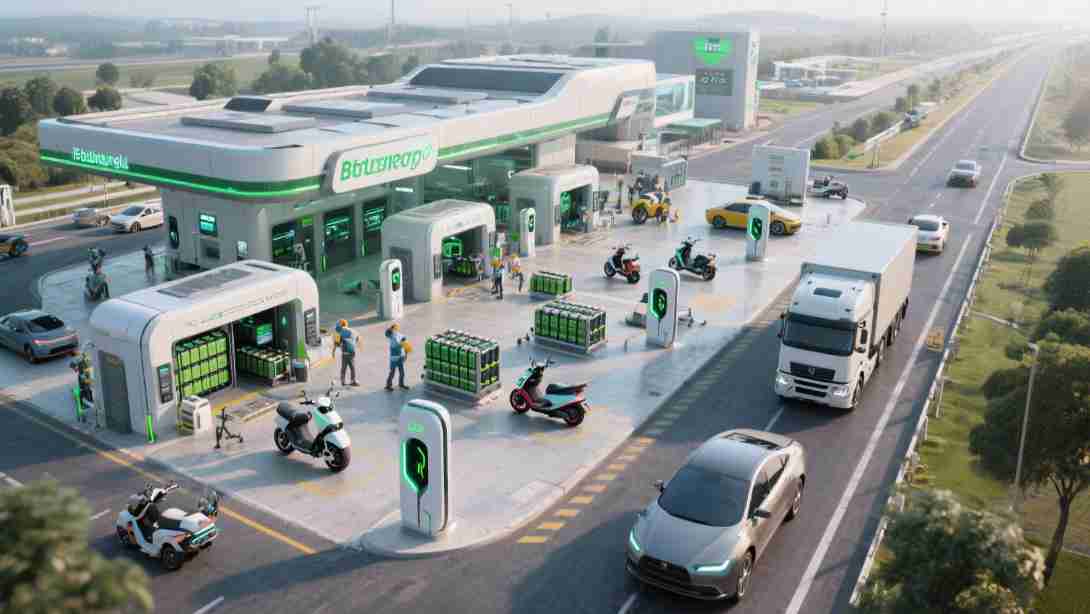
Fleets with fixed routes, tight schedules, or two-wheeler formats often find swapping more efficient than plug-in charging. Under this model, riders exchange a depleted pack for a charged one in under two minutes—no queuing, no wait.
Commercial roll-outs have begun in Delhi, where the EV Policy explicitly backs swapping for 2- and 3-wheelers, the city’s largest polluters. At the same time, operators are installing 300 kW ultra-fast cabinets along highways to service inter-city taxis and freight trucks. These fills add 100 km of range in roughly ten minutes, rivalling an ICE refuelling stop.
From a business view, battery swapping demands higher capex because you own multiple battery sets, yet utilisation—and hence revenue—can be dramatically higher in hub-and-spoke logistics. If you already serve delivery fleets, consider a hybrid site that mixes plug-in fast chargers for cars with a battery-swap carousel for two-wheelers.
Future Prospects and Practical Challenges
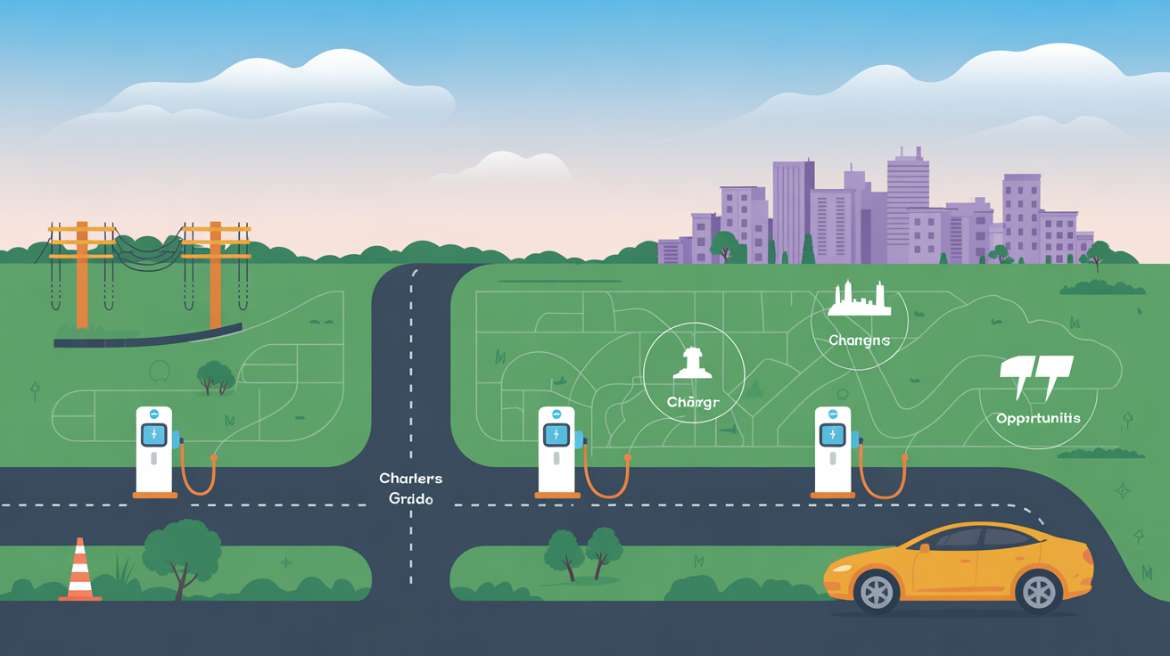
The Government of India’s plan to extend the 3 × 3 km grid nationwide means thousands of new stations must appear in the next five years. Delhi alone still needs more than 29,000 additional points to meet its target, and Kerala’s own blueprint calls for another 2,392 installs.
Challenges remain. Grid upgrades lag in some suburbs, and charger downtime can spike if spare parts are not in country. Scaling also demands capital: each DC fast port can cost ₹12–18 lakh installed. Partnerships with distribution companies, mall owners, and cleantech financiers can bridge these gaps.
On the technology front, expect further efficiency gains—from silicon-carbide power modules that reduce energy loss, to vehicle-to-grid capabilities that let you sell stored electricity back during peak demand. Policy will likely evolve in tandem, tightening uptime standards and perhaps capping retail tariffs to protect consumers.
The bottom line? A well-planned electric vehicle charging station network will remain a high-growth, policy-supported sector for years to come. If you secure prime sites, deploy reliable hardware, and integrate smart software from day one, you can capture both steady cashflows and long-term capital appreciation.
To ensure your EV charging station operates smoothly in India’s unique climate, consider partnering with ThunderPlus, India’s leading EV charging network. Explore our range of charging solutions and franchise models at thunderplus.io to set up a reliable and efficient charging station today!
Frequently Asked Questions
Q1. What is an electric vehicle charging station?
It is a facility where an electric vehicle can connect to the power grid and replenish its battery using either AC or DC electricity. Public stations range from slow 3.3 kW outlets to ultra-fast 300 kW cabinets.
Q2. What is an electric vehicle charging station cost?
A basic AC slow charger can be installed for under ₹1 lakh, whereas a 60 kW DC fast charger with civil works and grid upgrades may require ₹12–18 lakh. Land lease or revenue-share arrangements are additional.
Q3. How do I secure land quickly for a new station?
Use the single-window portal available in states like Delhi to apply for permissions and explore revenue-sharing plots offered by municipal bodies. Early engagement with the local distribution company helps you lock in grid capacity.
Q4. Is battery swapping better than fast charging?
For high-usage two- or three-wheeler fleets, swapping offers two-minute turnarounds and removes wait time. Private car owners usually prefer plug-in fast charging because they do not need to subscribe to a battery-swap service.
Q5. My chargers show frequent downtime—what should I check first?
Confirm that your software back-end is pushing the latest firmware and verify cooling systems on DC units, as overheating is a common fault in India’s climate. Remote diagnostics built into most modern chargers will highlight failing components early.
Q6. How will GST affect my pricing strategy?
GST on charging currently stands at 18 percent. You collect this from drivers and remit it, so it does not impact your margin directly. However, you should factor it into displayed prices to avoid customer confusion and comply with tax norms.


